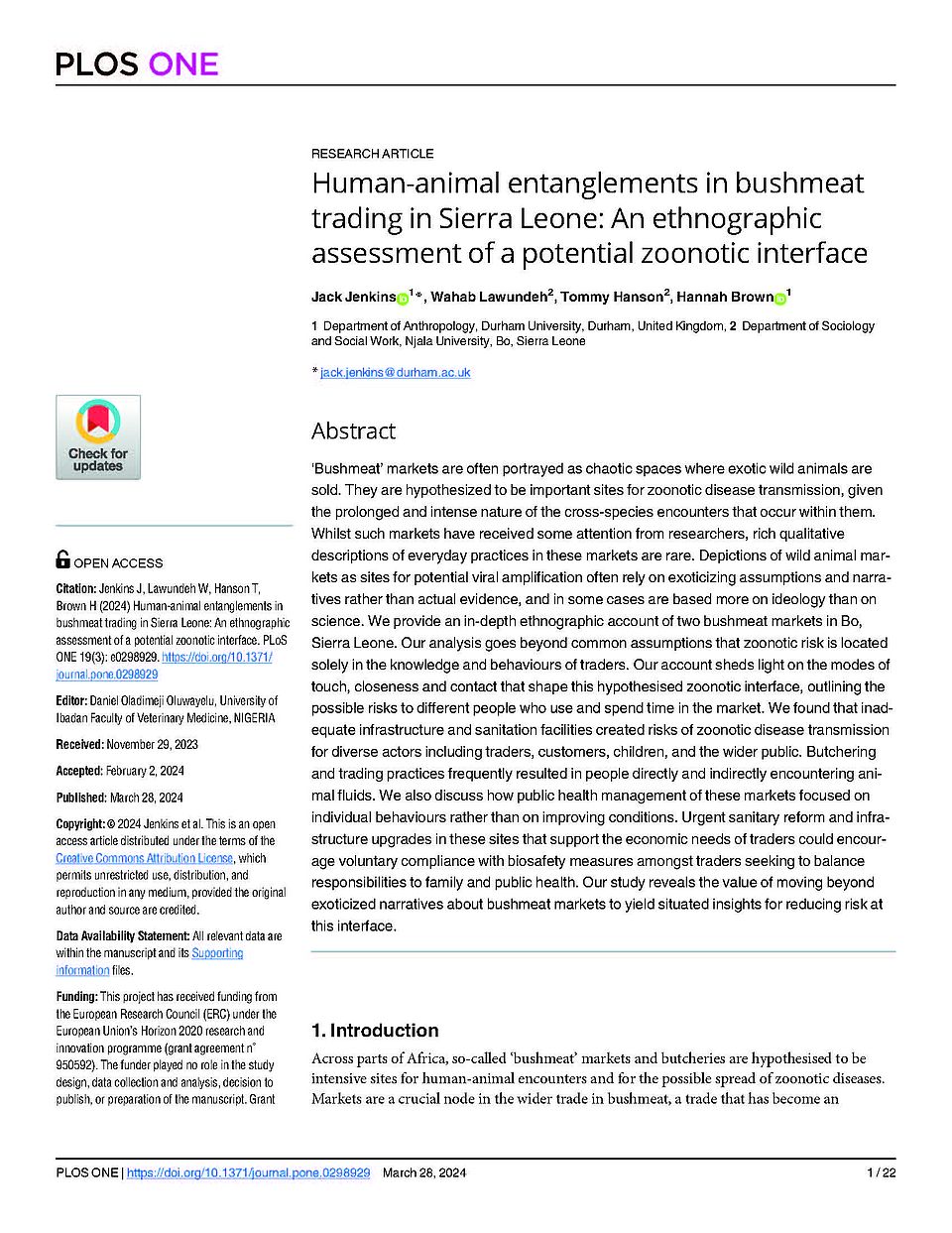Neue Publikationen
/ Forschung
Publication: "Human-animal entanglements in bushmeat trading in Sierra Leone: An ethnographic assessment of a potential zoonotic interface"

This article co-authored by Wahab Lawundeh provides an in-depth ethnographic account of two bushmeat markets in Bo, Sierra Leone. The authors found that inadequate infrastructure and sanitation facilities created risks of zoonotic disease transmission for diverse actors including traders, customers, children, and the wider public. They also discuss how public health management of these markets focused on individual behaviours rather than on improving conditions.
Abstract
‘Bushmeat’ markets are often portrayed as chaotic spaces where exotic wild animals are sold. They are hypothesized to be important sites for zoonotic disease transmission, given the prolonged and intense nature of the cross-species encounters that occur within them. Whilst such markets have received some attention from researchers, rich qualitative descriptions of everyday practices in these markets are rare. Depictions of wild animal markets as sites for potential viral amplification often rely on exoticizing assumptions and narratives rather than actual evidence, and in some cases are based more on ideology than on science. We provide an in-depth ethnographic account of two bushmeat markets in Bo, Sierra Leone. Our analysis goes beyond common assumptions that zoonotic risk is located solely in the knowledge and behaviours of traders. Our account sheds light on the modes of touch, closeness and contact that shape this hypothesised zoonotic interface, outlining the possible risks to different people who use and spend time in the market. We found that inadequate infrastructure and sanitation facilities created risks of zoonotic disease transmission for diverse actors including traders, customers, children, and the wider public. Butchering and trading practices frequently resulted in people directly and indirectly encountering animal fluids. We also discuss how public health management of these markets focused on individual behaviours rather than on improving conditions. Urgent sanitary reform and infrastructure upgrades in these sites that support the economic needs of traders could encourage voluntary compliance with biosafety measures amongst traders seeking to balance responsibilities to family and public health. Our study reveals the value of moving beyond exoticized narratives about bushmeat markets to yield situated insights for reducing risk at this interface.
Jenkins J., Lawundeh W., Hanson T., Brown H. (2024). Human-animal entanglements in bushmeat trading in Sierra Leone: An ethnographic assessment of a potential zoonotic interface. PLoS ONE 19(3): e0298929. https://doi.org/10.1371/journal.pone.0298929
Co-author Wahab Lawundeh is an MA student at the Centre for African Studies Basel.
